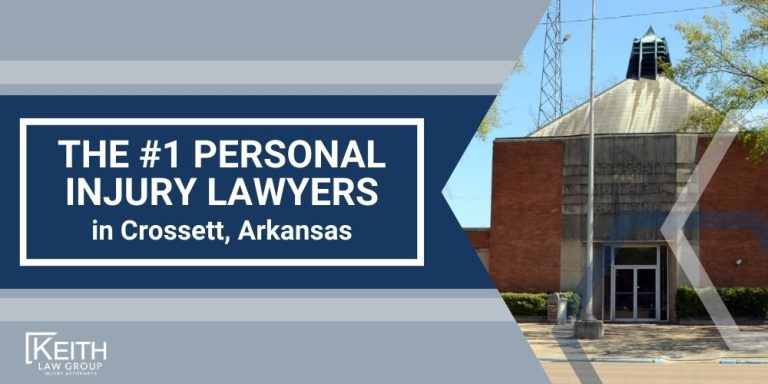Under Arkansas law, the personal injury process involves a series of steps designed to ensure full and fair compensation for victims harmed by negligence.
Arkansas follows a modified comparative fault rule, meaning an injured party can recover damages as long as they are less than 50% at fault for the accident.
The statute of limitations for filing a personal injury lawsuit in Arkansas is three years from the date of the injury.
Cases often begin with an investigation to gather evidence and determine liability, including police reports, medical records, and witness statements.
This is followed by attempts to negotiate a fair settlement with the responsible party or their insurance provider.
If negotiations fail, a lawsuit may be filed, and the case proceeds through the litigation process, including discovery, mediation, and potentially a trial.
Throughout this process, Arkansas courts evaluate claims based on the preponderance of evidence standard, requiring the plaintiff to prove that it is more likely than not that the defendant’s negligence caused their injury.
Here are the key steps in the personal injury lawsuit process in Arkansas:
- Consultation with a Personal Injury Attorney – Discuss your case with a personal injury lawyer to understand your rights and options.
- Investigation – Gather evidence to establish liability and assess the full extent of damages.
- Demand Letter – Send a formal demand for compensation to the at-fault party or their insurer.
- Settlement Negotiations – Attempt to reach a fair resolution without going to court.
- Filing a Lawsuit – Initiate a formal legal claim if a settlement cannot be reached.
- Discovery Process – Exchange evidence and information with the opposing party to build the case.
- Trial or Settlement – Present the case in court or finalize a settlement agreement to resolve the claim.
Gathering Evidence for a Personal Injury Claim
Evidence is the foundation of any successful personal injury claim, as it establishes liability and demonstrates the extent of damages.
Arkansas courts rely on clear and convincing proof to evaluate claims, making thorough evidence collection essential.
By documenting the details of your accident and injuries, you strengthen your ability to secure fair compensation for your losses.
Keith Law Group’s experienced personal injury lawyers can help gather and retain evidence crucial to your claim.
Types of evidence in a personal injury claim may include:
- Accident Reports – Police reports, incident reports, or workplace accident documentation.
- Medical Records – Diagnosis, treatment plans, medical bills, and physician statements.
- Photographs and Videos – Visual documentation of the accident scene, injuries, and property damage.
- Witness Statements – Testimonies from those who saw the incident occur.
- Expert Opinions – Analysis from medical professionals, accident reconstructionists, or other specialists.
- Correspondence with Insurers – Records of communications and settlement offers from insurance companies.
- Personal Records – Journals detailing pain, emotional distress, or lifestyle changes caused by the injury.
- Employment Records – Documentation of lost wages or reduced earning capacity.
Common Damages in a Personal Injury Lawsuit
In a legal context, damages refer to the compensation awarded to a victim to address the physical, emotional, and financial harm caused by another party’s negligence.
Arkansas law recognizes several types of damages, including economic damages, non-economic damages, and in some cases, punitive damages.
Understanding the damages available in your case is critical to ensuring you recover the full amount you are entitled to for your losses.
Your personal injury lawyers will help you assess and calculate relevant damages in your case.
Common types of damages include:
- Medical Expenses – Past and future costs for treatments, surgeries, medications, and rehabilitation.
- Lost Wages – Compensation for income lost during recovery or due to diminished earning capacity.
- Pain and Suffering – Non-economic damages for physical pain and emotional distress caused by the injury.
- Property Damage – Repair or replacement costs for damaged personal property, such as a vehicle.
- Loss of Consortium – Compensation for the loss of companionship or support suffered by the victim’s loved ones.
- Punitive Damages – Awarded in cases involving gross negligence or intentional harm to punish the defendant.
- Out-of-Pocket Costs – Reimbursement for expenses like transportation to medical appointments or home modifications.
- Loss of Enjoyment of Life – Damages for the inability to participate in hobbies, activities, or everyday pleasures.
Proving Negligence in an Arkansas Personal Injury Case
Proving negligence is a critical step in any Arkansas personal injury case and involves demonstrating that the defendant failed to meet their legal responsibility.
The process begins by showing that the defendant owed the plaintiff a legal duty of care, such as driving safely or maintaining a safe property.
Next, it must be established that the defendant breached this duty through reckless or negligent actions.
This breach must be directly connected to the plaintiff’s injuries, meaning the injuries would not have occurred without the defendant’s misconduct.
Arkansas law requires the plaintiff to also prove that their injuries resulted in measurable damages, such as medical expenses, lost wages, or pain and suffering.
Evidence like accident reports, witness statements, and expert testimony can be crucial in building a strong case.
By clearly connecting the defendant’s actions to the harm suffered, the plaintiff can demonstrate their right to compensation under the law.


